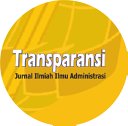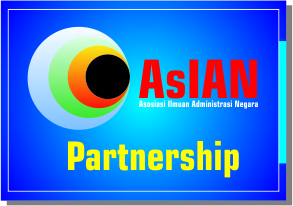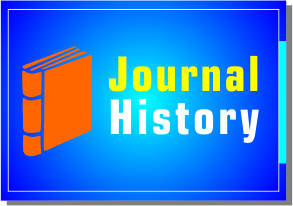Kota Cerdas Dan Mobilitas Cerdas: Sebuah Tinjauan Literatur
DOI:
https://doi.org/10.31334/transparansi.v5i1.2265Keywords:
Cities, Informastion and Communication Technology, Smart City, Smart Mobility,Abstract
Cities have a variety of issues that arise. Today's advancements in information and communication technology provide many benefits to human life, including urban management. This article discusses Smart City or Smart City, as well as one of its aspects, Smart Mobility or Smart Mobility. The research method used is a literature review or study of journal articles, books, and previous studies on this research topic. According to the study's findings, Smart City is a concept that combines information and communication technology with urban infrastructure, of course, this integration is also carried out on transportation infrastructure to facilitate public access to public transportation infrastructure and also traffic conditions easily, this also known as smart mobility make it easier to manage urban areas, and then to capture public opinion through digital applications, and manage information to make decisions and policy. Easy public access to transportation infrastructure is also expected to increase public interest in switching to public transportation and changing their behavior patterns in traffic.References
Beaumont, B., Baltus, C., Hallot, E., Wolff, E., Poelmans, L., & Stephenne, N. (2016). Sustainable and smart city planning using spatial data in wallonia. ISPRS Annals of the Photogrammetry, Remote Sensing and Spatial Information Sciences, IV-4/W1, 3-10.
Behrendt, F., Loos, E., M., & Sourbati. (2020). The role of mobility digital ecosystems for age- friendly urban public transport: A narrative literature review. International Journal of Environmental Research and Public Health, 17(20), 1-16.
Benevolo, Clara & Dameri, Renata & D’Auria, Beatrice. (2016). Smart Mobility in Smart City. Action taxonomy, ICT intensity and public benefits.
Cho, HeeAh., Kim, Jongbok., Kwon, Heeseo Rain., & Lee, Donju., Lee, Sang Keon. International case studies of smart cities. Singapore: Inter-American Development Bank.
Creswell, John W. (2009). Research Design – Qualitative, Quantitative, and Mixed Methods Approaches – Third Edition. USA: Sage
Cugurullo, F., & Yigitcanlar, T. (2020). The sustainability of artificial intelligence: An urbanistic viewpoint from the lens of smart and sustainable cities. Sustainability (Switzerland), 12(20), 1-24.
Curry, E., Dustdar, S., Sheng, Q. Z., & Sheth, A. (2016). Smart cities – enabling services and applications. Journal of Internet Services and Applications, 7(1), 1-3.
Dameri, Renata Paola. (2017). Smart city implementation, creating economic and public value in innovative urban systems. Basel: Springer International Publishing AG
de Wijs, L., Witte, P., & Geertman, S. (2016). How smart is smart? theoretical and empirical considerations on implementing smart city objectives - a case study of dutch railway station areas. Innovation (Abingdon, England), 29(4), 424-441.
Docherty, I., Marsden, G., & Anable, J. (2018). The governance of smart mobility. Transportation Research. Part A, Policy and Practice, 115, 114-125.
Florea, A., & Tomaszewska, E. (2018). Urban smart mobility in the scientific literature — bibliometric analysis, Engineering Management in Production and Services, 10(2), 41-56.
IMD (2020). Smart City Index 2020. Lausanne: IMD Switzerland. Diperoleh dari www.imd.org
Iqbal, Hena., Khan, Khaliquzzaman., & Paul Sujni.(2020). Sustainable governance in smart cities and use of supervised learning based opinion mining. International Journal of Electrical and Computer Engineering (IJECE), 489-497.
Janssen, M., Maheshwari, D., & Matheus, R. (2018;2020;). Data science empowering the public: Data-driven dashboards for transparent and accountable decision-making in smart cities. Government Information Quarterly, 37(3), 101284.
Klaassen, E. A. M., & Manders, T. N., (2019). Unpacking the smart mobility concept in the dutch context based on a text mining approach. Sustainability (Basel, Switzerland), 11(23), 6583.
Layanan Informasi BPIW. (2017). Manajemen perkotaan yang inovatif dan smart solusi permasalahan perkotaan. Badan Pengembangan Infrastruktur Wilayah. Diperoleh dari www.bpiw.pu.go.id
Miles, Matthew B., Huberman, A. Michael, & Saldafia, Johnny. (2014). Qualitative Data Analysis-A Methods Sourcebook Edition 3. USA: SAGE Publications.
Mukhtar-Landgren, D., & Paulsson, A. (2020). Governing smart mobility: Policy instrumentation, technological utopianism, and the administrative quest for knowledge. Administrative Theory and Praxis.
Nasution, A. A., Nasution, F. N., & Risanty. (2020). Smart city development strategy and it's challenges for city. Paper presented at the IOP Conference Series: Earth and Environmental Science, 562(1)
Tomtom. (2019). Traffic index 2019. Tomtom. Diperoleh dari www.tomtom.com
van Oers, L., de Hoop, E., Jolivet, E., Marvin, S., Späth, P., & Raven, R. (2020). The politics of smart expectations: Interrogating the knowledge claims of smart mobility. Futures, 122.
Downloads
Published
Issue
Section
License

This work is licensed under a Creative Commons Attribution-ShareAlike 4.0 International License
Please find the rights and licenses in Transparansi : Jurnal Ilmiah Ilmu Administrasi By submitting the article/manuscript of the article, the author(s) agree with this policy. No specific document sign-off is required.
- License
The commercial use of the article will be governed by the Creative Commons Attribution license as currently displayed on Creative Commons Attribution-ShareAlike 4.0 International License.
2. Author(s)' Warranties
The author warrants that the article is original, written by stated author(s), has not been published before, contains no unlawful statements, does not infringe the rights of others, is subject to copyright that is vested exclusively in the author and free of any third party rights, and that any necessary written permissions to quote from other sources have been obtained by the author(s).
3. User Rights
Transparansi : Jurnal Ilmiah Ilmu Administrasi spirit is to disseminate articles published are as free as possible. Under the Creative Commons license, Transparansi : Jurnal Ilmiah Ilmu Administrasi permits users to copy, distribute, display, and perform the work for non-commercial purposes only. Users will also need to attribute authors and Transparansi : Jurnal Ilmiah Ilmu Administrasi on distributing works in the journal and other media of publications.
4. Co-Authorship
If the article was jointly prepared by more than one author, any authors submitting the manuscript warrants that he/she has been authorized by all co-authors to be agreed on this copyright and license notice (agreement) on their behalf, and agrees to inform his/her co-authors of the terms of this policy. Transparansi : Jurnal Ilmiah Ilmu Administrasi will not be held liable for anything that may arise due to the author(s) internal dispute. Transparansi : Jurnal Ilmiah Ilmu Administrasi will only communicate with the corresponding author.
5. Miscellaneous
Transparansi : Jurnal Ilmiah Ilmu Administrasi will publish the article (or have it published) in the journal if the article’s editorial process is successfully completed. Transparansi : Jurnal Ilmiah Ilmu Administrasi editors may modify the article to a style of punctuation, spelling, capitalization, referencing and usage that deems appropriate. The author acknowledges that the article may be published so that it will be publicly accessible and such access will be free of charge for the readers as mentioned in point 3.
Every accepted manuscript should be accompanied by "Copyright Transfer Agreement"prior to the article publication.











